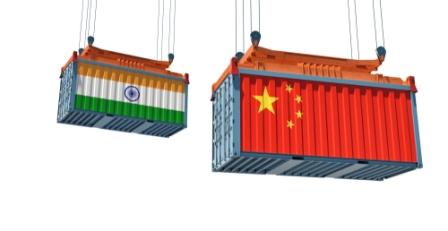
Globally, resentment against China is rising due to various geo-political and economic issues. The Covid-19 pandemic has only aggravated the matter. US-China trade issues are well known, and there isn’t any clarity on whether there will be a phase two for the trade deal. Similarly, UK has banned Huawei, a multinational technology company based in China, from its 5G telecom network. The issues surrounding Hong Kong has even more strained UK’s relation with China.These developments in the global economy could add more layers to the current economic crisis.
The situation is similar for India with the rising border issues with China. Though the border tension between India and China has eased as the disengagement process is underway, it is too early to say that the situation is back to normal. The tension between India and China got a new angle with the rising chorus to boycott Chinese products. Government of India has even banned 59 apps based in China citing privacy issues. In this background, it is important to understand India’s trade relation with China, and the economic implications associated with it.
China is one of the major trading partners of India. In FY20, India’s total trade (commodities) with China stood at USD 82 billion. During the same period, India imported USD 65 billion worth of commodities from China, which is around 14 percent of total imports of commodities by India. Manufactured goods constitute the highest share in India’s imports from China at 96 percent. Within manufactured goods, electronic goods constitute the highest share (33 percent), followed by engineering goods (32 percent), and chemical and related products (20 percent).
Any move to disrupt the flow of goods would prove costly to India. The dominance of Chinese products in the Indian market is due to price advantage it offers. For instance, there is a higher demand for Chinese smart phone in Indian market due to the better cost to performance ratio. In CY19, India had more than 500 million smart phone users, an increase of more than 18 percent compared to the previous year. The Chinese brands played an important role in bringing more users to the smartphone ecosystem. Even if the government decide to raise the import duties on Chinese goods, ultimately, it would be the Indian consumers who have to pay the high price.
Similarly, various domestic industries are dependent on China for procuring raw materials/intermediate products required for production. If we take the case of automobile industry, of the total auto components that is being imported, 24 percent comes from China. For auto tyres and tubes, China accounts for a share of 24 percent in the imports. Likewise, in the pharmaceutical sector, China accounts for a share of 68 percent in the total import of bulk drugs and drug intermediaries. In the short run, it would be difficult for the companies to find an alternative source for procuring raw materials at competitive rates.
In FY20, India exported USD 16.5 billion worth of commodities to China, running a trade deficit of USD 48.5 billion. India’s exports to China accounts for a share of 5 percent in India’s total exports. Of the total exports to China, manufactured goods accounts for the highest share at 54 percent, whereas agriculture and allied products accounts for a share of 17 percent.
Similarly, Indian start-ups receive investment from Chinese companies. These investments not only come with credit but also expertise and technological competence. In the current ecosystem, start-ups have an important role in employment generation.Thus, it is imperative to provide a conducive environment for the start-ups to prosper.
Presently, straining the trade ties with China is easier said than done. However, it doesn’t mean that India wouldn’t be able to catch up with China or take China’s position in global trade. Yet, it requires meaningful policy actions and reforms from the government. For instance, it was anticipated that India would greatly benefit from the trade tension between US and China, as the companies would shift their sourcing from China. Nevertheless, India didn’t benefit much whereas countries like Bangladesh and Vietnam grabbed the opportunity. Though India climbed up the ladder in ease of doing business, there is a general consensus that doing business in India is still not an easy task. The situation calls the need for reforms, and more importantly reforms must be prompt to have meaningful outcomes. It took the already ailing economy a global health crisis to initiate some long-needed reforms. And such a delay could prove costly for an aspiring country like India.










Well presented.
A mention about how insignificant is China’s dependence on India would have added value to the content.
Compliments.
It is loaded with personal opinion rather than foresight